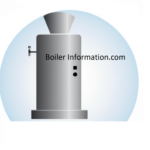A safety valve is a critical part of an industrial boiler system. It is designed to relieve excess pressure within the boiler by releasing steam or water. The safety valve is a key component of a boiler’s safety system and is designed to activate in the event of a pressure surge or malfunction in the boiler.
The safety valve works by allowing steam or water to escape if the pressure in the boiler exceeds a preset level. When the pressure reaches the preset point, a spring-loaded valve opens and releases the excess pressure. The valve will remain open until the pressure inside the boiler has dropped back to a safe level.
In order to ensure that the safety valve is working correctly, the valve should be tested regularly. This can be done by manually depressing the spring-loaded valve. This should open the valve and release a small amount of steam or water. If this does not happen, the valve should be replaced as soon as possible.
It is also important to check the pressure level of the boiler regularly. If the pressure is too high, the safety valve may not be able to open and the boiler will be at risk of exploding.
The safety valve is a crucial component of an industrial boiler system and should be checked and tested regularly to ensure that it is working correctly.
